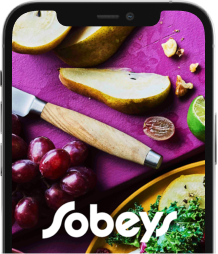Is there anything more delightful than pulling fragrant homemade cookies out of a hot oven? Whether you’re baking them as an after-school surprise for the kids, preparing dozens for a special occasion or whipping up a quick batch to devour yourself, few culinary endeavours are as satisfying as good, old-fashioned cookie baking.
For everyone from novice bakers to serious cookie gurus, this guide explains the different types of cookies, shares the best ingredients, offers baking and decorating tips, and gives advice on how to store your sweet treats for maximum flavour and enjoyment.
Types of Cookies
Drop Cookies
This is the first kind of cookie most of us learn to bake—think classics such as chocolate chip and oatmeal raisin. The batter of these easy-to-make treats is literally dropped from a spoon directly onto the cookie sheet. The results are a bit misshapen and not exactly uniform in size, creating a from-scratch look that lots of bakers love. If you’re more into precision and prefer a from-the-bakery look, try using a cookie scoop (which looks like a miniature ice-cream scoop) to ensure a more standard size and even baking.
Try them out with one of these recipes:
Rolled Cookies
Whether cut into stars, hearts or gingerbread men, rolled cookies are a big family favourite, especially around holiday time. This type of cookie gets its name from the fact that the dough requires rolling out before being cut into shapes, usually using a cookie cutter. Also known as cut-out cookies, these treats are typically more crumbly and less chewy than drop cookies, although the texture can be tweaked by adjusting the thickness of the dough and the baking time. Rolled cookies are often decorated with icing, sprinkles or coloured sugar crystals.
Try them out with one of these recipes:
-
Sliced Cookies
Also known as “icebox cookies” or slice-and-bake cookies, this quick-to-make variety is the plan-ahead baker's dream. The dough is typically shaped into a long cylinder, chilled in the refrigerator, then sliced into uniform discs or formed into rectangles or triangles. Alternating flavours of dough, like chocolate and vanilla, can be layered and “cemented” with egg white to create stripes or a checkerboard pattern. Multiflavoured pinwheels are another pretty variation. The dough can be frozen for up to two months; just defrost slightly, slice and bake for homemade treats any time!
Try them out with one of these recipes:
-
Thumbprint Cookies
Thumbprint cookies start as a drop cookie, then an indentation is made on each with (you guessed it!) your thumb. Next comes adding something pretty and tasty into the little craters. Choose ingredients that complement the flavour of the cookie dough you’re using. Possibilities include whole or chopped pecans, almonds or walnuts; chocolate or butterscotch chunks; fresh, dried or candied fruits (cherries are super popular); and jams or jellies.
Try them out with one of these recipes:
Sandwich Cookies
With these treats, the filling is always the star. Drop, sliced or rolled cookies can work as the outer sandwich layers—just make sure they’re uniform in diameter and thickness. Filling possibilities are endless: flavoured buttercream icing, sweetened mascarpone or cream cheese, jams and jellies, peanut butter, lemon curd, chocolate ganache, marshmallow fluff, nutella and ice cream are just some of your options.
Try them out with one of these recipes:
Better Baking
Cookie Baking Tools
Read your cookie recipe carefully before beginning so that you’re prepared. The main items you’ll need are a mixing spoon, a large mixing bowl and two cookie sheets, either to bake both at once or so you can alternate between the two to avoid putting dough on a hot sheet, which will change how cookies bake. A shiny metal rimless sheet is often recommended for cookies; however, most metal baking sheets work just fine. Just remember to grease cookie sheets with a thin coating of butter, shortening or cooking spray, or line with parchment paper, unless the recipe says otherwise.
Measurements need to be exact when baking, so be ready to go with both liquid measuring cups (with a spout) and dry measuring cups (with which you use a knife to level ingredients). A very thin serrated knife is handy for sliced cookies, and a cooling rack is a must for every variety.
Depending on the type of cookie, other required tools may include:
-
- Food processor or electric (hand or stand) mixer
-
- Whisk, fork or pastry blender
-
- Rubber spatula or offset spatula
-
- Piping bag or cookie press
-
- Parchment paper, wax paper or foil
-
- Rolling pin
-
- Ice cream scoop
-
- Cookie cutters
Cookie Ingredients
Another key step before starting is assembling your ingredients. What a disappointment to be halfway through a recipe and discover that you’re missing something from your pantry. For the most flavour in your cookies, gather the best ingredients available: pure chocolate, fresh nuts, quality dried fruits and real flavourings.
Use butter when you can—it has a richer flavour than shortening or margarine, though they are fine substitutes in most recipes if buttery flavour isn’t your thing. Unsalted butter is preferred so you can better control the level of saltiness in the recipe—if you have to use salted, reduce any added salt to compensate. If the recipe calls for vanilla, use only pure vanilla extract. As for flour, most recipes call for all-purpose to produce the best-textured cookies.
All ingredients should be at room temperature when you begin so they incorporate evenly in the batter. At room temperature, eggs and dairy will trap more air, which will expand during baking to make lighter cookies with bake shop–like texture. Melted butter, on the other hand, will cause cookies to overspread on the sheet.
Making the Dough
Almost all cookie recipes require butter and sugar to be creamed together. For the best texture, spend a few extra minutes on this step to incorporate plenty of air into the dough.
When it’s time to blend in the dry ingredients, your recipe will tell you whether to use an electric mixer or a food processor, or to do it by hand. Ensure the dough is well mixed just until incorporated—overmixed batter loses air and results in dense cookies. The “goodies” —chocolate chips, raisins, nuts—should be gently mixed in by hand at the end.
Rolling, Shaping and Cutting: Prepping to Bake
When rolling and shaping cookies, surfaces can become sticky and the dough a bit too soft, but resist the urge to add more flour—too much makes for dry, tough cookies. Instead, firm up the dough in the refrigerator to make it more manageable. For doughs that soften quickly, remove them from the fridge in small portions as you cut and shape each one.
For rolled cookies, try rolling portions of dough between sheets of wax or parchment paper, occasionally checking the bottom sheet for creases. This technique helps spread the dough evenly (which is essential for even baking) and eliminates any sticking to the surface. Classic rolled cookies such as gingerbreads and sugar cookies are typically rolled out to about a quarter inch (half a centimetre) thick.
When cutting sliced cookies, roll the “log” a quarter turn after every few cuts to help it retain its rounded shape. Make slices the same thickness so they bake evenly.
Baking Tips
Always preheat your oven to ensure even baking.
Most cookies bake for between eight and 15 minutes, but always check for doneness at the shortest time indicated in the recipe. The best way to know if your cookies are ready is by watching them closely. With a few exceptions, cookies are usually done when golden brown on the bottom and around the edges. Most cookies will continue to cook after being removed from the oven, though, so be careful not to overbake, and follow recipe directions.
One of the main causes of inconsistent baking times is hot spots—zones in the oven where the temperature is higher. This can mean both burnt and underdone cookies on the same baking sheet. Usually, the best place to bake cookies is right in the centre of the middle rack. If you suspect your oven temperature is uneven, rotate the baking sheet when cookies are halfway done. If baking more than one sheet at a time, swap them halfway through baking.
If you’re making lots of cookies at once, let your baking sheets cool down between batches. Warm pans cause cookies to spread too much and lose their shape.
Cooling and Decorating
Always transfer baked cookies to a cooling rack, but only after allowing them to rest on the baking sheet for one to two minutes. Many varieties of cookies are fragile, especially when warm, so being patient will keep them intact. Cooling racks are useful because they allow air to circulate all around your creations, helping to stop the cooking process.
Decorating cookies can be as elaborate or as simple as you like. A good rule of thumb is to match the decoration to the type of cookie. (Think a half pecan on top of a pecan sandy.)
Classic sugar cookies at holiday time or for special occasions are typically frosted with tinted royal icing. A piping bag with interchangeable tips is helpful if you’re planning to add elaborate designs. Embellishments of crystalized sugar, colourful sprinkles or shimmery dragées—small colourful or metallic candies—finish the job.
If you aren’t quite so creative or ambitious, try simpler finishing touches such as icing sugar dusted through a sieve. Glazes, which can be either hard or sticky depending on their ingredients, are also an easy decorating idea. Paint them on with a pastry brush or drizzle right over cookies set on a rack.
Another great way to take almost any cookie up a notch is to dip it in melted chocolate. Try white, milk or dark chocolate, dipping the cookie part way or completely, then sprinkle with extras such as nuts or nonpareils (tiny decorative balls made of sugar and starch). After dipping, set the cookies onto waxed paper to cool and harden.
Any decorations added before baking should be pressed in firmly so they stay put as the cookies expand in the oven.
When it comes to a cookie’s trimmings, you’re bound only by your imagination. Try one of these inventive recipes, which feature hard candy “stained glass” (they’re easy to adapt to non-Halloween shapes) and salted caramel:
Storing and Freezing
Delicate cookies do well in airtight tins or plastic containers, separated by layers of waxed paper; not-so-delicate types are fine without paper, and can even survive in a cookie jar.
Cookies of almost every kind freeze very well. Make sure to carefully layer them in airtight wrapping or containers to avoid breakage, freezer burn and flavour transfer. Cookies that require delicate garnishes should be decorated after defrosting. Drop cookies (first frozen on sheets and then popped into freezer bags) and sliced cookies (still wrapped as logs) freeze even better unbaked. Simply take out the required amount as needed and bake from frozen, adding an extra few minutes to the cooking time.
These Almond-Orange Cookies are a great example of cookies that freeze well both before and after baking.
Other Uses for Cookies
Sometimes cookies are just the beginning of more complex and irresistible desserts.
A great example is the popular Italian dessert tiramisu, which is composed of luscious layers of espresso-drenched ladyfingers. Crunchy treats such as gingersnaps, graham crackers, amaretti and chocolate or vanilla wafers can be ground into foundations for creamy pies, fruity tarts and rich cheesecakes. Trifles and parfaits are two more classic desserts that can include premade cookies, layered in whole or crushed into bits before adding.
-







